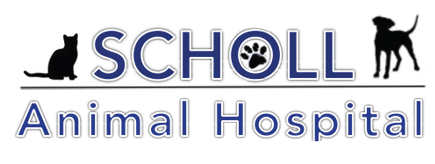
Leptospirosis is a disease caused by the bactera Leptospira. This bacteria is carried by and shed in the urine of many wildlife hosts including skunks, foxes, rats and racoons. In these hosts the bacteria resides within the kidney and causes no clinical signs. Cohabitation with these wild animals is increasing due to suburban growth encroaching on their natural habitat. Thus, it is possible for all dogs, urban and rural alike, to cross paths with Leptospira. Dogs are exposed to the bacteria when they come in contact with water or organic material soiled with urine from an infected animal.
Once inside the dog the bacteria replicates and travels throughout the body in the blood. This allows rapid access to all of the organ systems including the liver, spleen, kidneys, eyes and central nervous system. The wide spread of the bacteria results in the varied clinical signs of leptospirosis. These include, but are not limited to: fever, anorexia, soreness, jaundice, vomiting, diarrhea, depression, weakness and hemorrhages of the mucous membranes.
Basic biochemistry and complete blood count performed when a dog first presents often shows evidence of kidney failure, liver damage, and whole body inflammation. A urinalysis also shows changes associated with kidney damage. The test of choice for definitive diagnosis is called a microscopic agglutination test (MAT). This test is performed by a referral laboratory and is reported as a titre. The titre indicates the magnitude of infection with the bacteria if it is present. Unfortunately, this test can be negative during the first 7-10 days of the disease. Alternative tests include PCR and culture.
All methods of diagnosis do not yield immediate answers and thus treatment is initiated prior to obtaining a diagnosis. The sooner treatment can be initiated the more likely it is that existing tissue damage can be reversed. Hospitalization is required and treatment is comprised of supportive care, targeting clinical signs, and antibiotics. Leptospirosis responds well to appropriate and prompt antibiotic therapy. Prognosis is generally good with survival rates reported as 80-90%. However, dogs may develop chronic kidney failure or chronic active hepatitis.
Measures to prevent leptospirosis infection include: control of rodent population, decrease stagnant water, isolation of infected animals, vaccination. The current vaccination available in North American protects against 4 serovars (variant) of Leptospirosis. Unfortunately, infection with Leptospira can occur in vaccinated dogs if they contact a serovar not present in the vaccine.
Leptospirosis can be transmitted to humans from the urine of infected dogs and wildlife. It is therefore important that humans should wear gloves and wash their hands after being in contact with the urine of an infected dog. Clinical signs in humans include: fever, headache, chills, muscle aches, vomiting, jaundice, red eyes, abdominal pain, diarrhea and rash. More information can be found online from the Centers for Disease Control and Prevention.
